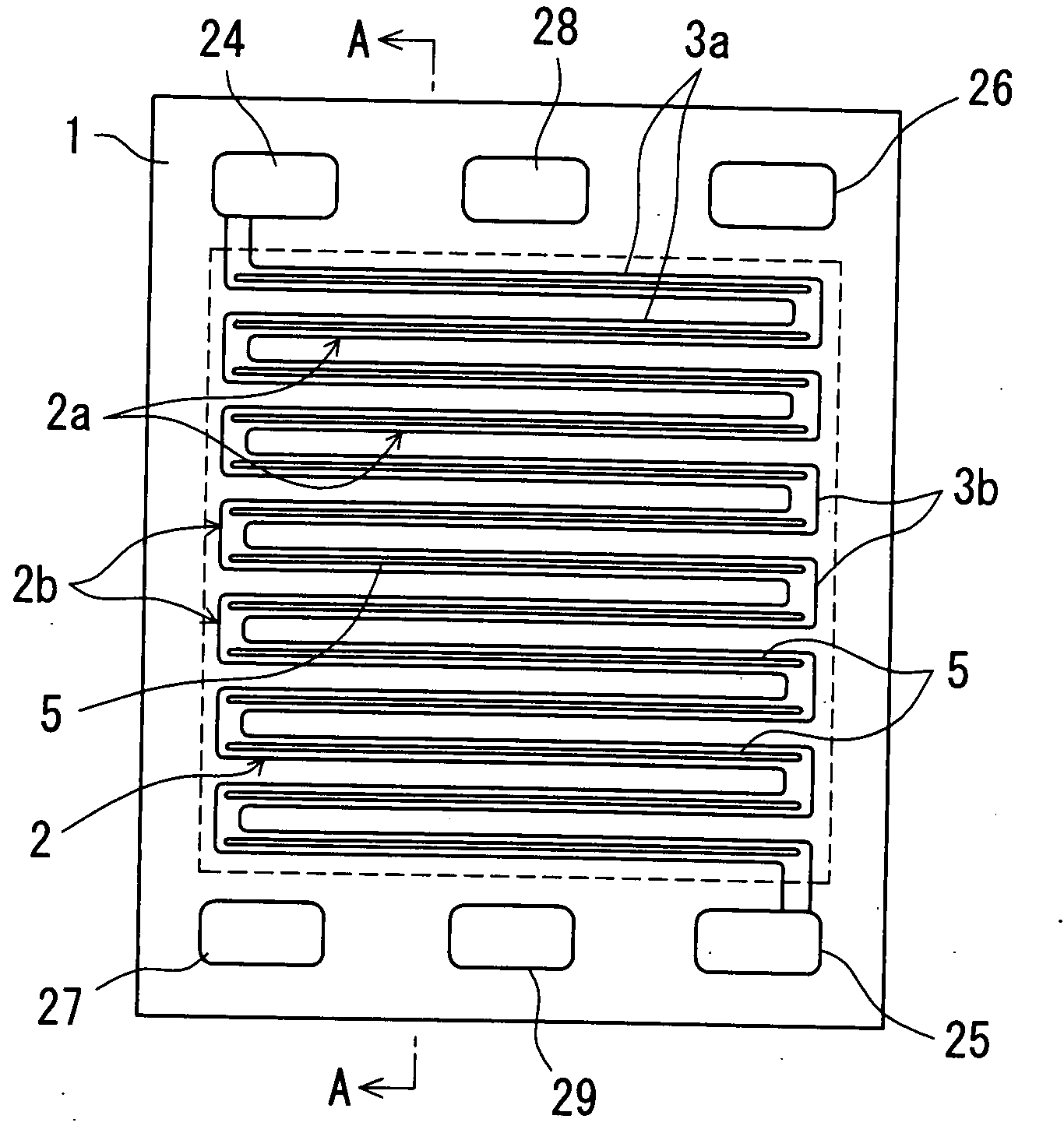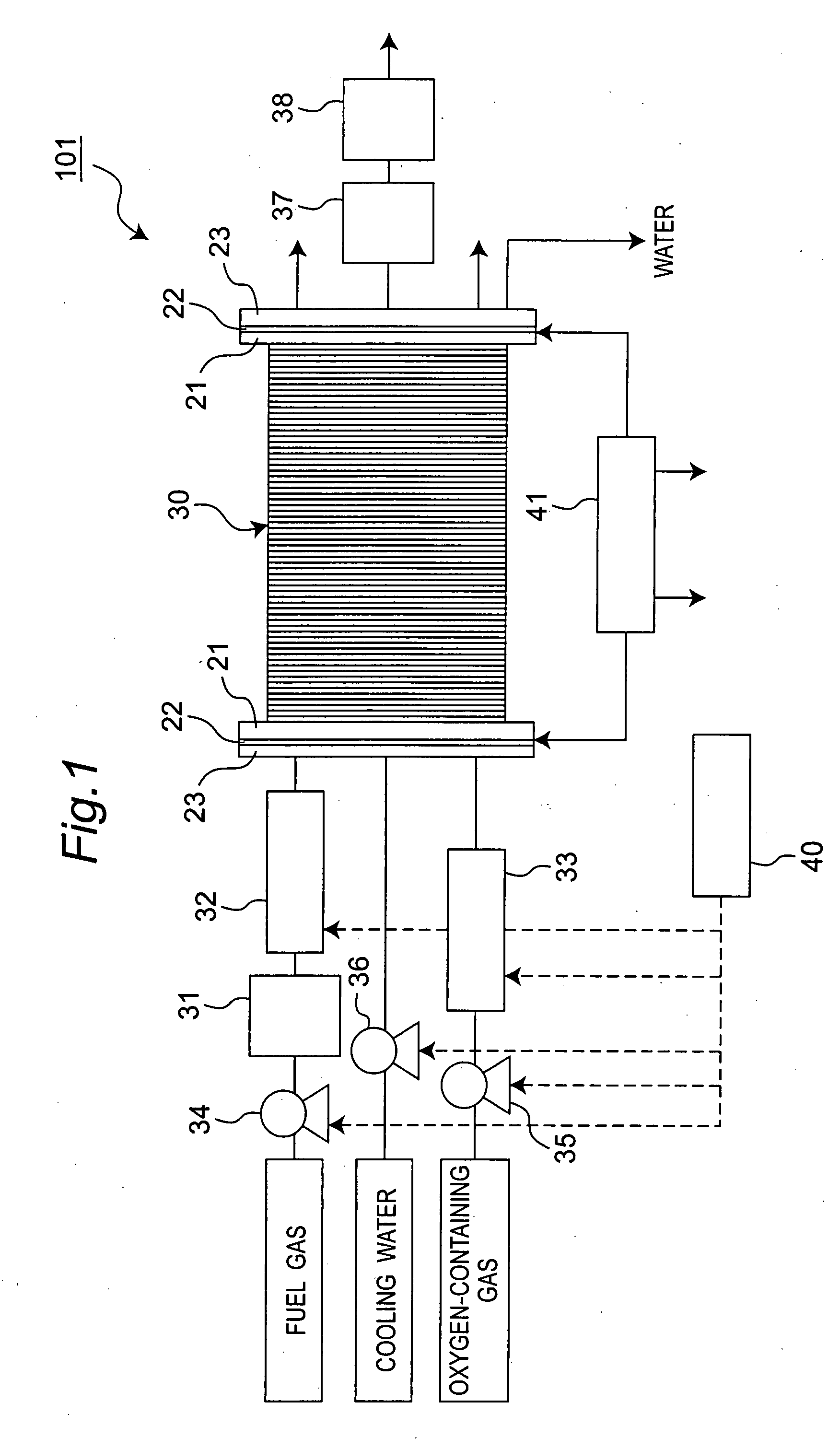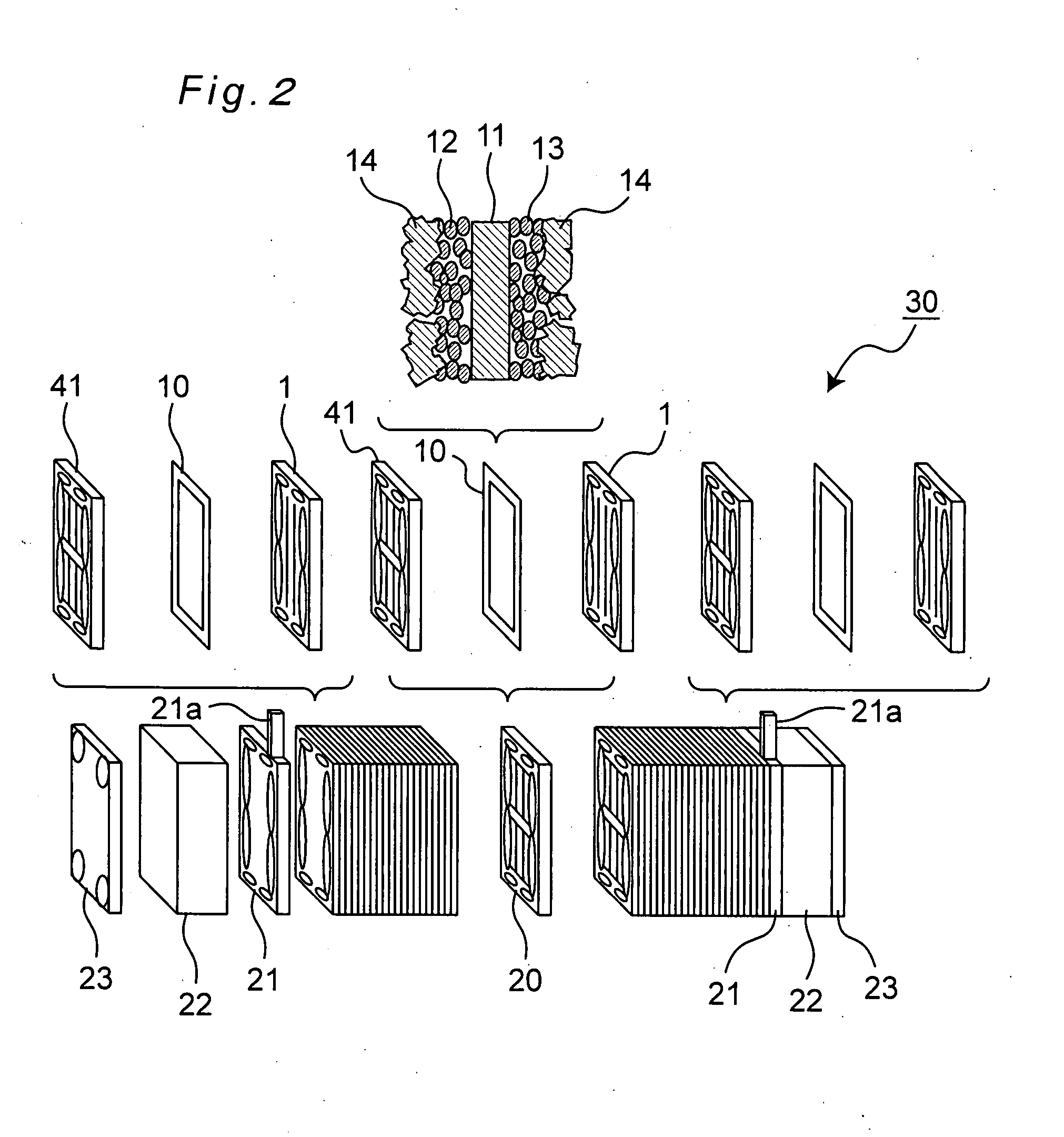Fuel Cell
a fuel cell and cell technology, applied in the field of fuel cells, can solve the problems of reducing the power of the cell, affecting the anti-flooding property of the polyelectrolyte, and affecting the ion conductivity of the polyelectrolyte itself, so as to improve the anti-flooding property, stable gas supply, and suppress the growth of water drop enough to block the gas passage
- Summary
- Abstract
- Description
- Claims
- Application Information
AI Technical Summary
Benefits of technology
Problems solved by technology
Method used
Image
Examples
embodiment
[0078]A schematic constructional view showing a schematic construction of a fuel cell according to one embodiment of the present invention is shown in FIG. 1. Also, a schematic exploded view of a fuel-cell stack (hereinafter, referred to as a stack) included in the fuel cell 101 shown in FIG. 1 is shown in FIG. 2.
[0079]The fuel cell 101 is a polymer electrolyte fuel cell (PEFC), as an example, which works to make a hydrogen-containing fuel gas and an oxygen-containing oxidizer gas such as air electrochemically react with each other to produce electric power, heat and water at the same time. As shown in FIG. 1, the fuel cell 101 includes a stack 30 having a layer-stacked structure in which a plurality of fuel-cell use cells (or unit cells) each having an anode-and-cathode pair of electrodes are connected in series, a fuel processor 31 for extracting hydrogen from fuel gas, an anode humidifier 32 for humidifying hydrogen-containing fuel gas extracted by the fuel processor 31 to improv...
examples
[0111]Next, several examples of the fuel cell of the above-described embodiment of the invention will be described below, in which effects of forming the small groove portions in the gas passages are explained.
first example
[0112]The fuel-cell stack according to First Example is a stack 30 which is formed as shown in FIGS. 3A and 3B as described above. Structure and manufacturing method of the stack 30 of this First Example are explained.
[0113]First, fabrication process for the MEA10 is explained. Acetylene black powder, on which 25 wt % of platinum particles having a mean particle size of about 30 Å was carried, was used as a catalyst for electrodes. Into a solution in which the catalyst powder was dispersed in isopropanol, a dispersion solution in which powder of perfluorocarbon sulfonic acid was dispersed in ethyl alcohol was mixed, by which a catalyst paste was obtained.
[0114]Meanwhile, a carbon nonwoven cloth (gas diffusion layer 14), which would serve as a base material for electrodes, was subjected to water repellency treatment. A carbon nonwoven cloth (made by Toray, TGP-H-120) having 14 cm×14 cm outer dimensions and a thickness of 36 μm was impregnated with a fluororesin-containing aqueous dis...
PUM
 Login to View More
Login to View More Abstract
Description
Claims
Application Information
 Login to View More
Login to View More - R&D
- Intellectual Property
- Life Sciences
- Materials
- Tech Scout
- Unparalleled Data Quality
- Higher Quality Content
- 60% Fewer Hallucinations
Browse by: Latest US Patents, China's latest patents, Technical Efficacy Thesaurus, Application Domain, Technology Topic, Popular Technical Reports.
© 2025 PatSnap. All rights reserved.Legal|Privacy policy|Modern Slavery Act Transparency Statement|Sitemap|About US| Contact US: help@patsnap.com



